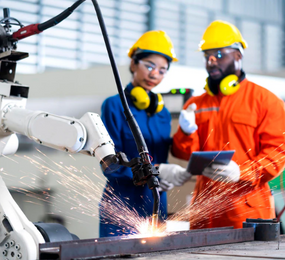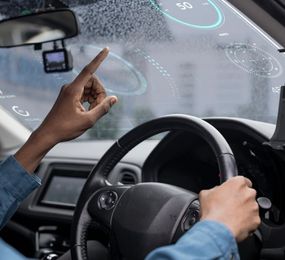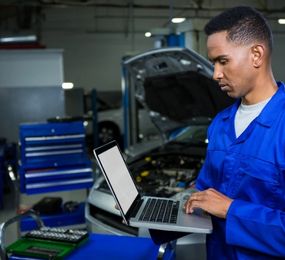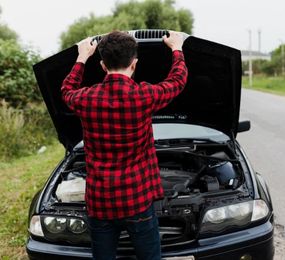Autonomous vehicles (AVs) are at the forefront of technological innovation, promising to transform transportation by enhancing efficiency, reducing accidents, and providing new mobility solutions. However, one of the most critical challenges in the development and deployment of AVs is ensuring system reliability. Autonomous vehicles must perform flawlessly in a wide variety of conditions, and any system failure could have catastrophic consequences. To mitigate these risks, redundancy is employed as a key strategy in AV design. This article delves into the importance of system reliability and redundancy in autonomous vehicles and explores how these concepts are implemented to ensure safe and dependable driving experiences.
Understanding System Reliability in Autonomous Vehicles
System reliability in autonomous vehicles refers to the ability of all onboard systems—sensors, processors, control units, and actuators—to consistently perform their intended functions under various operating conditions. Unlike traditional vehicles, AVs rely on a complex network of interdependent systems that must work together seamlessly to navigate roads, avoid obstacles, and make decisions in real-time.
Given the critical role these systems play, even a minor malfunction could result in a loss of control, leading to accidents or other dangerous situations. Therefore, ensuring high levels of system reliability is not just a technical challenge but a safety imperative.
The Role of Redundancy in Enhancing Reliability
Redundancy is a design principle used to enhance system reliability by providing multiple pathways or backups to ensure continuous operation in the event of a failure. In autonomous vehicles, redundancy can take several forms:
- Sensor Redundancy
- Overview: Autonomous vehicles use various sensors, including cameras, LiDAR, radar, and ultrasonic sensors, to perceive their surroundings. Sensor redundancy involves having multiple sensors of the same or different types to cover the same operational domain. If one sensor fails or provides inaccurate data, other sensors can compensate, ensuring the vehicle still has an accurate understanding of its environment.
Example: If a camera is blinded by the sun, the radar or LiDAR can continue to provide accurate distance measurements to nearby objects, allowing the vehicle to maintain safe operation.
- Computational Redundancy
- Overview: The computational systems in AVs, including central processing units (CPUs) and graphics processing units (GPUs), are responsible for processing sensor data and executing driving decisions. Computational redundancy involves using multiple processors or parallel computing systems to ensure that if one fails, the others can take over.
- Example: AVs often use dual-redundant computing systems, where critical tasks are mirrored on separate processors. If one processor fails, the system can switch to the backup without any loss of functionality.
- Control System Redundancy
- Overview: The control systems of an autonomous vehicle include the steering, braking, and acceleration mechanisms. Redundancy in control systems ensures that if a primary actuator fails, a secondary actuator can assume control to maintain safe operation.
Example: Many AVs are designed with dual brake systems, so if the primary braking system fails, the secondary system can be activated to safely stop the vehicle.
- Communication Redundancy
- Overview: Autonomous vehicles often rely on communication networks, both internal (between various vehicle systems) and external (with other vehicles, infrastructure, or cloud services). Redundancy in communication systems involves having multiple communication pathways to ensure that information is reliably transmitted even if one pathway fails.
Example: If an AV loses connection with a cloud-based service, it should be able to switch to a backup communication method, such as direct vehicle-to-vehicle (V2V) communication, to continue safe operation.
Challenges in Implementing Redundancy
While redundancy is crucial for enhancing system reliability, it also introduces new challenges:
- Complexity: Adding redundant systems increases the complexity of the vehicle's architecture, which can make it more difficult to design, test, and maintain.
- Cost: Redundant systems add to the cost of developing and manufacturing autonomous vehicles. Automakers must balance the need for redundancy with the need to keep vehicles affordable.
- Weight and Space: Redundant components increase the weight and take up more space within the vehicle, potentially impacting fuel efficiency and design flexibility.
Future Directions in System Reliability and Redundancy
As autonomous vehicle technology continues to advance, so too will the strategies for improving system reliability and redundancy. Future developments may include:
- Advanced AI for Fault Detection: Leveraging artificial intelligence to predict potential system failures before they occur, allowing for proactive management of redundancy systems.
- Improved Sensor Fusion Techniques: Enhancing the ability to combine data from multiple redundant sensors to create a more accurate and reliable perception of the environment.
- Modular Redundant Architectures: Designing vehicles with modular systems that can be easily swapped out or upgraded, improving both reliability and maintainability.
System reliability and redundancy are fundamental to the safe operation of autonomous vehicles. By incorporating multiple layers of redundancy, AVs can continue to operate safely even in the event of system failures. However, implementing these redundancies poses significant technical, financial, and logistical challenges. As the industry progresses, ongoing innovation in redundancy strategies and reliability engineering will be crucial to realizing the full potential of autonomous vehicles, ensuring they are safe, reliable, and ready for widespread adoption.
Register today to secure your spot, please check here: https://bit.ly/3zH7AKk
For more information and group participation, contact us: [email protected]
















